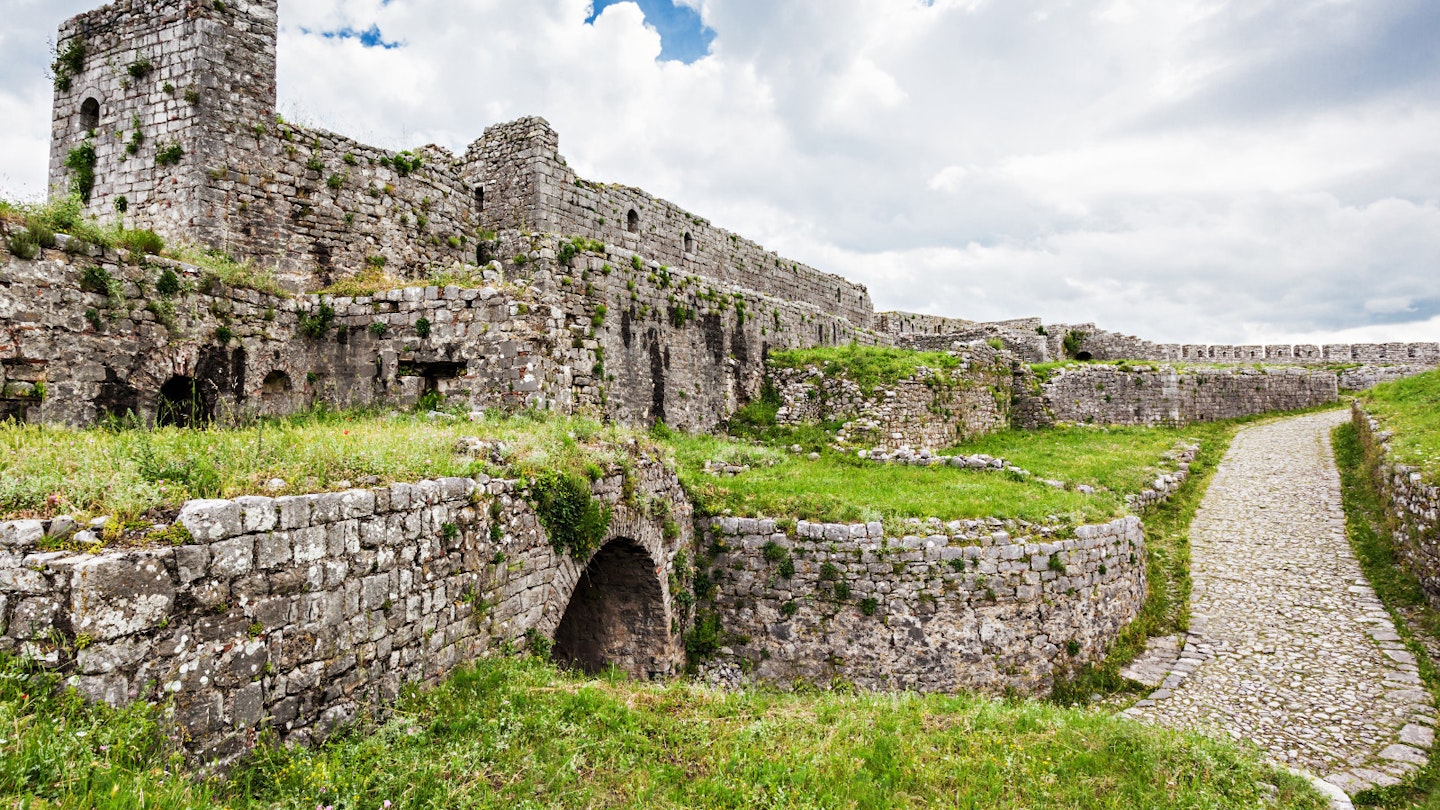Having spent nearly half of the 20th century isolated from the rest of the world, Albania remains somewhat a land of mystery, only recently making its way onto European travel itineraries as an offbeat and budget-friendly destination.
While ‘the land of eagles’ may be better known for its stormy communist past (with some 750,000 concrete bunkers still scattered around to prove it), it has a rich and diverse historical and cultural legacy. The best way to take in Albania’s ancient castles, lived-in World Heritage Sites, and ethnographic museums is on a road trip, especially if you have limited time or aren’t keen on working out the country’s bewildering bus system.
Shkodra
Start your cultural exploration of Albania in the north. Once an important trading town due to its favorable geographical position at the meeting point of two rivers and very close to the Adriatic Sea, Shkodra is considered the country’s cultural capital thanks to its music and literary traditions.
First a stronghold for Illyrians and then Romans from as early as the 3rd century BC, Shkodra is also home to the impressive Rozafa Fortress, the oldest in the country. A walk around Shkodra’s recently renovated Old Town is also a pleasant affair; another attraction is the Marubi National Photography Museum which has a great collection of works from Albania’s first photographers.
Tradita G&T is an excellent, traditionally decorated boutique hotel for enjoying a meal or an overnight stay.
Kruja
Head south from Albania’s cultural capital to its historical capital, Kruja. No trip to the country is complete without a stop in this town synonymous with Skanderberg, Albania’s national hero who led the resistance to the Ottomans some 500 years ago. For a period Skanderberg was based here, and Kruja is regarded as almost a holy site for Albanians.
You can explore the main sights here in a couple of hours – they include the Skanderbeg Museum, National Ethnographic Museum, and tucked-away Bektashi teqe, all located inside the Kruja Castle. With its isolated hilltop location, the castle is a charming place to hang around and go for an early morning stroll through the traditional bazaar before the tour buses start rolling in.
The uncontested views and location of Hotel Panorama Kruje make it a perfect choice for anyone not in a hurry to move on to the bustle of the capital Tirana, only 35km away. For those just passing through, Bar Restaurant Alba (inside the castle walls) is an atmospheric spot for a coffee or lunch.
Berat
From Kruja or Tirana, continue south and inland towards Berat via Lushnja and the SH4. Known as the ‘town of a thousand windows’, Berat has become a major star on the Albanian travel scene thanks to its impressive Ottoman ‘sprawl’ up the hills on both sides of the Osumi River.
The old Unesco-listed Mangalem Quarter with its narrow, cobbled streets is an incredibly picturesque area to wander around. A climb up to its still-inhabited fortress, Kalaja, will reward you with dramatic views of the surrounding mountains and town below. Check out the 16th-century works of art at Onufri Museum housed inside the Church of the Dormition of St Mary, the fortress’ largest church that dates from the 18th century. Back down the hill, inside an 18th-century Ottoman house, is the Ethnographic Museum with exhibits on Albanian traditional culture.
Berat is a place you’ll want to spend at least a night or two, and there’s nowhere better than in the heart of the Mangalem Quarter at the lovely, family-owned and operated Hotel Osumi. For dinner or drinks with a view, head across the bridge to Antigone or to the rooftop restaurant of Hotel Tomori.
Gjirokastra
The final stop on this north-to-south cultural tour of Albania, Gjirokastra was inscribed on the Unesco World Heritage List in 2008 as another important Ottoman town along with Berat. Your best bet getting here is to head back north to Lushnja and continue along the SH4 through the spectacular Tepelenë District and Drino Valley.
With the (mostly one-way road) ascent into the centre of Gjirokastra you’ll be struck by the magic of the limestone-paved Old Town, which also happens to be the birthplace of Albania’s most famous author, Ismail Kadare. Hike or drive further up to the imposing Gjirokastra Castle, perhaps the finest in the country, for sweeping valley views; get your history fix in its Artillery Gallery, Army Museum, and the new, informative Gjirokastra Museum. Within the castle walls you’ll also find the skeleton of a US Air Force plane mysteriously forced down near Tirana in 1957. Back in the Old Town, check out the Ethnographic Museum, occupying the former home of Albania’s notorious communist dictator Enver Hoxha, or Zekate House and Skenduli House, both fine examples of 18th- and 19th-century Ottoman mansions.
Stay for a night at the 300-year-old Gjirokastra Hotel and enjoy traditional local fare at Kujtimi, right in the heart of the Old Town, before heading back north or onwards to the Albanian Riviera.
Road trip tips
There are plenty of options for car hire in the capital Tirana, or consider picking one up in Podgorica, Montenegro, just across the border (though make sure Albanian insurance is included).
Albania’s reputation for atrocious road conditions is sadly not an exaggeration; however, big improvements have been made over the past few years. An experienced driver shouldn’t face too many infrastructural challenges on the major highways.
Signage along the way is sufficient, and there are plenty of shiny petrol stations around to keep you fueled up and caffeinated. Just keep a sharp eye out for the occasional ferocious furgon (minibus), courageous pedestrian, or rogue cow or sheep that can often appear out of nowhere.





